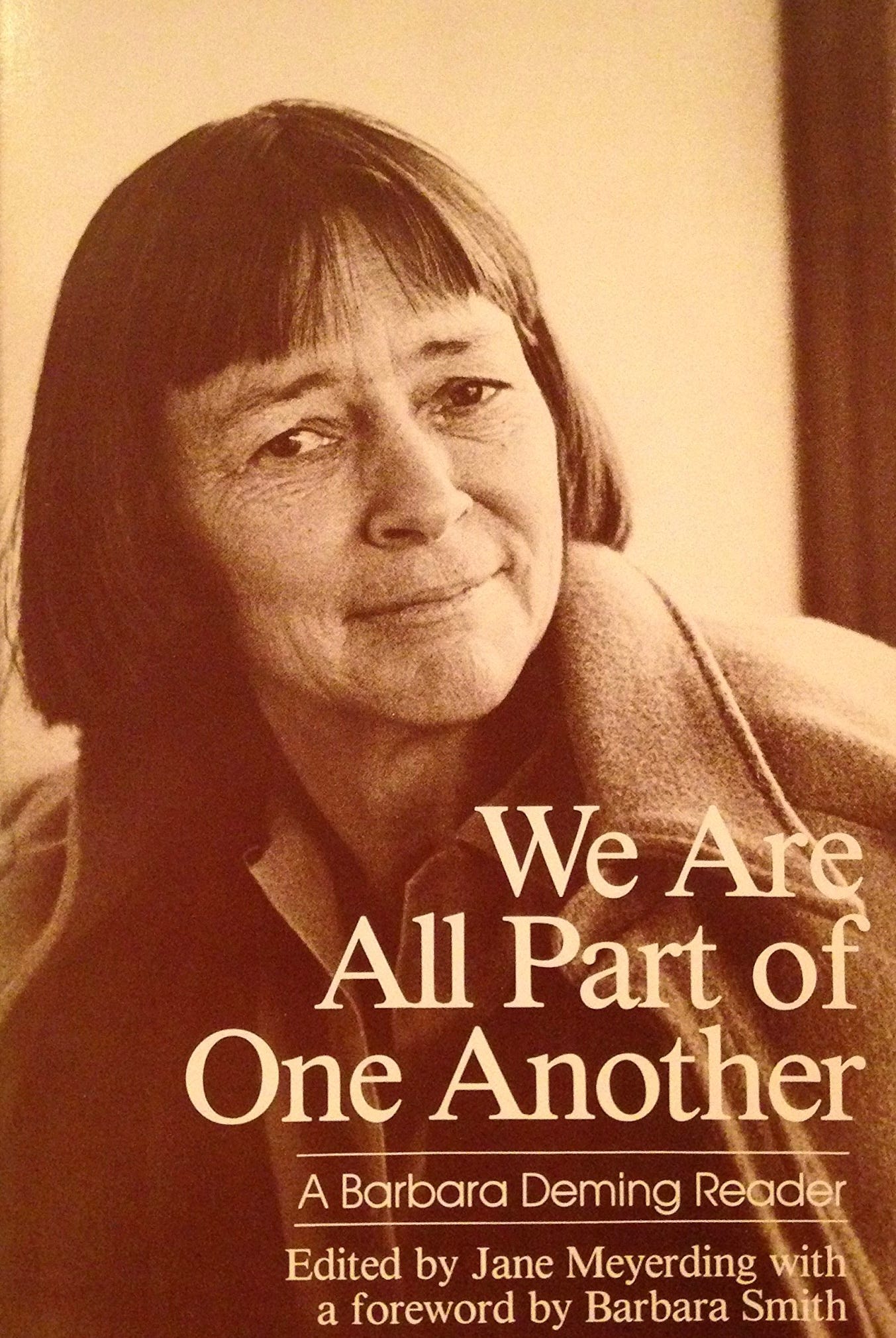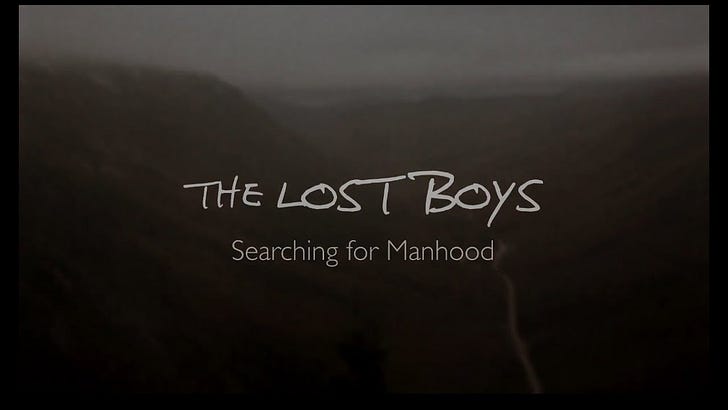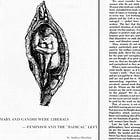On Violence
Violence is common, but why should it keep being so?
I have been wanting to write something, and the best I seem able to do is a note on violence with thoughts for expanding later—and some reading. Yesterday, I posted a version of this piece to Facebook, but I already had some more thoughts. I have added some about the commonality of violence, the possible moral instructiveness of witnessing violence, and the civilized barbarism of socializing men and boys into violence.
In the German tongue, in the Polish town
Scraped flat by the roller
Of wars, wars, wars.
But the name of the town is common.
- Sylvia Plath, “Daddy,” October 12, 1962, nearly four months before her death by suicide on February 11, 1963, published posthumously in Ariel in 19651
I have been thinking about what American lesbian feminist Barbara Deming (1917-1984) wrote about nonviolent action: We can escape the dizziness of violence, if only we will try and recognize the other. For Deming, “respecting one’s own person” depends on “respecting the person of the other,” a balance of “self-assertion and respect for others.” Having been involved with the civil rights movement during the 1960s, Deming insisted on conversation despite any disagreement, the avoidance of the gun or the blade. Nonviolent practice always necessitates the other’s humanness, which challenges us to see the rights to life and happiness for others as for ourselves. “The trouble,” she explains, “is that people tend to feel that they are taking bolder action when they disdain all conversations with the adversary.” Acts of violence and their consequences transpire from this forgetting of being part of one another.2
Violence indicts the failures of our civilized way of life. Here are just three recent cases within the past few weeks:
Iryna Zarutska, 23, stabbed to death, murdered by Decarlos Brown Jr., 34, on August 223;
Ericka Lucas, 56, shot on August 29, died on September 9, murdered by Dexter Lamont Mills, 18, and an unnamed juvenile, 164;
Charlie Kirk, 31, shot to death, assassinated on September 10 by Tyler Robinson, 22.5
The most recent case involving Kirk has been the most well-known, and the stabbing murder of Zarutska has been visible—both widely consumed. Ericka Lucas’s murder at the hands of an 18-year-old male and a 16-year-old, an unnamed juvenile, is lesser-known but representative of everyday violence taking human lives. Apparently, Lucas was not even the intended target, believed to be hit by gunfire meant for somebody else. While videos of Zarutska and Kirk in their final moments circulated online as spectacle, there was none of Lucas. I will not watch the stabbing of Zarutska and the shooting of Kirk; I refuse to join their mass consumption. Even outside any otherwise evidently sexual context, violence on video easily becomes a kind of pornography. There is a voyeuristic quality in taking in others’ suffering, their fear, their agony, their death. Unsettlingly, we may even notice a masturbatory quality to consuming violence against others, figuratively if not perhaps literally “getting off” to it.
I think it is true that seeing violence can be morally instructive, as in studies of the Holocaust, lynchings in the United States, and of various wartime atrocities, among such examples. Abolitionists even used pictures and visual renderings alongside slave narratives in the nineteenth century to illustrate everyday brutality where the words could not do. Such imagery was a necessary corrective to the pro-slavery narrative that enslaved people experienced no such brutalization, that, as individuals, they found slavery to be personally if not also spiritually fulfilling.
Seeing atrocity rather than simply reading about it has been necessary in recognition and consideration of violence’s reality. Yet social media has changed how violence becomes viewed and consumed, which twists into the pornographic, unrestrainedly feasting on the spectacle of atrocity. Nowadays, there is this kind of “feeding frenzy” with how videos and images widely circulate online—and nearly endless speculative fiction appears written about them. It very easily crosses the line into violence as spectacle to be mass consumed—in a word, pornography. To some extent, at least I would argue, the consumeristic quality of violence can undermine the possibility of moral instructiveness. I do agree that witnessing violence matters, although social media terribly complicates what it means to witness it.
Violence is common. For 2023, the number of homicides in the US was 22,830, with 17,927 involving firearms—that is, approximately 79% involved shooting a person to death [Centers for Disease Control and Prevention (CDC)]. With a relatively lower figure, due to differences in assessment, the U.S. Department of Justice’s Bureau of Justice Statistics (BJS) gives a figure of 19,800 murder victims in 2023. From the BJS data from 2018 to 2022, an average of 80% of homicides involved a firearm, indicating approximately 15,840 victims in 2023, if following the statistical pattern. Numerical specifics aside, we find a ridiculous number of murdered citizens each year in our streets, in our communities, in our homes—not just tens of them, not just a few hundred, not just a few thousand. Exceeding ten thousand each year, each number represents a family who has lost a loved one to a preventable act of violence, most often being gun violence. The commonness of violence shoots throughout our nation like an infection spreading over the body. Every murder is a tragedy, and even one or a few would be horrible, but 10,000-20,000 murders per year—and sometimes even higher figures, most involving guns—should make us seriously question this society.6
It seems worth a note on sex: Were the numbers in the recorded murder cases more closely analyzed in terms of sex, most perpetrators would be male, often murdering not only other males but also women and children. This kind of sex-based reality cannot be explained solely in economic terms because it cuts across all classes from the rich to the poor throughout human societies—not only in the US. What it tells us is there is civilized barbarism in how we socialize men and boys that produces exactly these conditions not being sufficiently addressed in “culture war” discourse.
Like Deming, I am uncertain what is possible as far as stopping acts of violence tearing apart societies, families, and communities—not just here. But I do think we can think in terms of the possibilities. “What is possible,” she tells us, “is to act toward another human being on the assumption that all men’s lives are of value, that there is something about any man to be loved, whether one can feel love for him or not.”7 Yes, although herself a lesbian feminist, Deming was “old-school” in her use of “men’s lives,” “any man,” and “love for him”—we know, as she did, this assumption should apply to women as well. All women’s lives are of value, we may note, and there is something about any woman to be loved, whether one can feel love for her or not. How can we begin to oppose violence anywhere else if murder annually takes between 10,000 and 20,000 of us in the war zone of the nation itself? Until we think differently here, it seems unlikely it will move elsewhere against violence. The possibility of action through valuation of life against its violation seems worth holding tightly.

If you are unable to become a paid subscriber through Substack, then please feel free to donate via PayPal, if able. I am grateful for reader support!
Sylvia Plath, “Daddy,” 1962, in Ariel, 1965, in Ariel: The Restored Edition, A Facsimile of Plath’s Manuscript, Reinstating Her Original Selection and Arrangement (New York: HarperCollins Publishers, 2004), 74.
Barbara Deming, “On Revolution and Equilibrium,” 1968, in We Are All Part of One Another: A Barbara Deming Reader, ed. Jane Meyerding (Philadelphia: New Society Publishers, 1984), 169, 188, 184.
Isabel Keane, “Woman Who Fled Ukraine to Escape War Stabbed to Death in North Carolina Train Station,” The Independent, August 27, 2025, https://www.the-independent.com/news/world/americas/crime/ukraine-refugee-stabbed-death-charlotte-iryna-zarutska-b2814757.html.
Jamie Frevele, “‘Not the Intended Target’: Beloved Principal Gets Caught in Crossfire of Gunshots Intended for Someone Else, Police Say—and Now Two Teens Are Charged with Murder,” Law & Crime, September 10, 2025, https://lawandcrime.com/crime/not-the-intended-target-beloved-principal-gets-caught-in-crossfire-of-gunshots-intended-for-someone-else-police-say-and-now-2-teens-are-charged-with-murder.
Hannah Schoenbaum, Alanna Durkin Richer, Mark Sherman, and Eric Tucker, “Conservative Activist Charlie Kirk Assassinated at Utah University,” AP News, September 10, 2025, https://apnews.com/article/charlie-kirk-conservative-activist-shot-546165a8151104e0938a5e085be1e8bd.
See Centers for Disease Control and Prevention (CDC), National Center for Health Statistics, https://www.cdc.gov/nchs/fastats/homicide.htm; U.S. Department of Justice, Bureau of Justice Statistics (BJS), Lizabeth Remrey, “Homicide Victimization in the United States, 2023,” May 2025, https://bjs.ojp.gov/library/publications/homicide-victimization-united-states-2023.
Deming, “On Revolution and Equilibrium,” 175-176.






